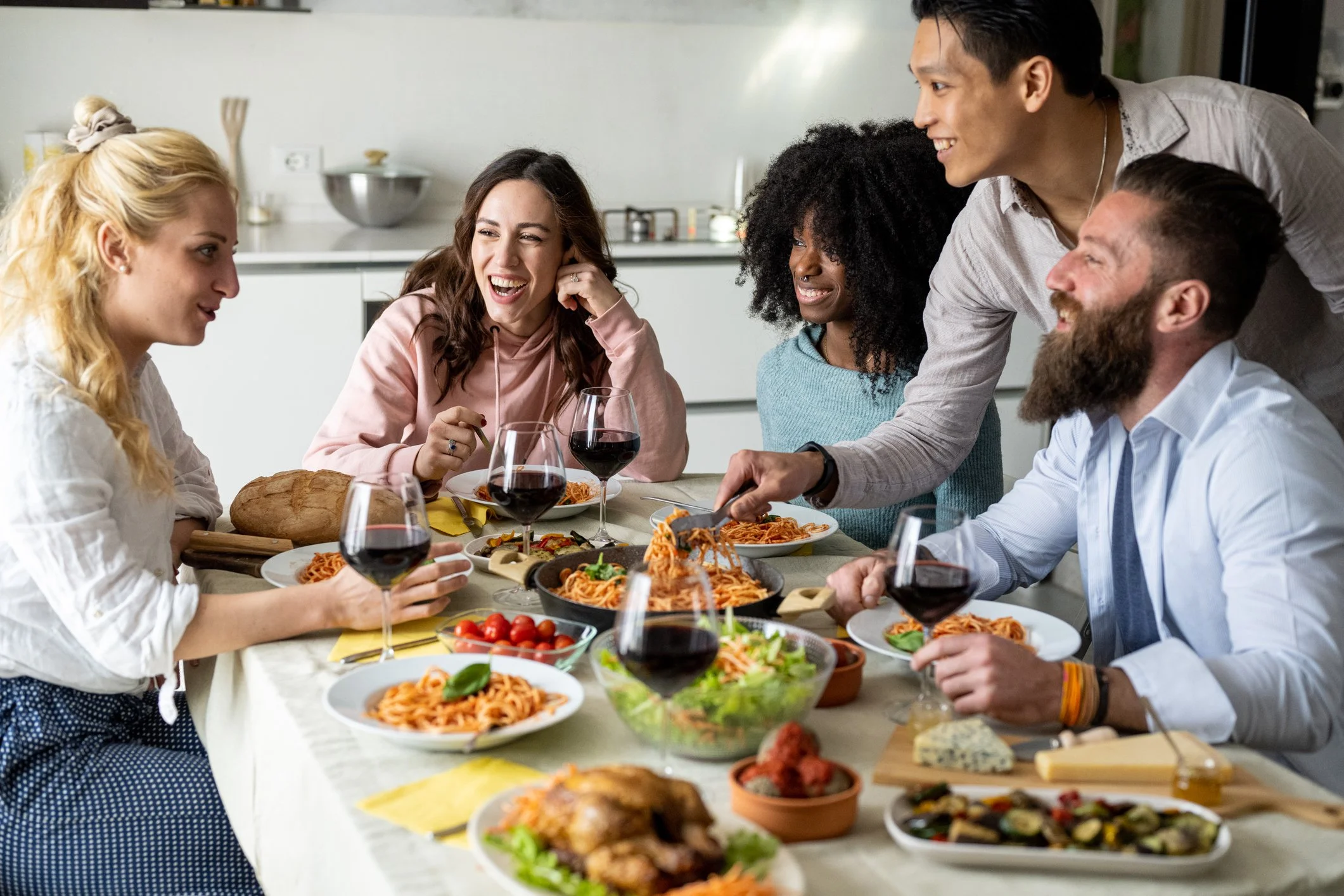The Wine Industry Will Be Just Fine: I Know it in My Gut
How gut science may end up proving the long-term viability of the wine business
--Peter Baedeker, 6/1/2024
“It is the integrated labor across levels of receptors, transmitters, cells, circuits, and organs that gives rise to the insatiable desire to thrive within the context of the external world in which we live.”—Dr. Diego V. Bohórquez, Neuropod Cells: The Emerging Biology of Gut-Brain Sensory Transduction
In the closing paragraph of the article by neuroscientist Dr. Diego Bohórquez and his colleagues on the discovery of literal communication between gut cells and the nervous system, the Duke School of Medicine professor explains how human being is essentially a result of the work that occurs between our body’s biological systems in ways that we’re just starting to understand. Countering the notion that the brain is the superior and infinitely complex organ guiding all higher-level human functions while the various organs and systems of what we call the “gut” are crude and mechanical, Dr. Bohórquez has discovered that gut cells assimilate nutrients and information from ingested food/liquids and deliver that information to the nervous system in a manner that is elegantly complex. His groundbreaking discovery of what he named “neuropods” emerged from an experiment where a single gut cell from a mouse was placed in a Petrie dish with a single neuron from that mouse and the cell began to “reach out” and touch the neuron in communication. Picture the gut cell forming an “arm” and reaching out to contact the neuron cell in an environment separated from the host animal. This discovery has transformed our understanding of how the gut and brain interact by showing that in addition to the indirect effects on our behavior caused by the gut microbiome and its relation to hormones in the bloodstream, the gut literally communicates with the nervous system through the vagus nerve. This communication results in everything from basic signals to help individuals avoid dangerous foods, to complex messaging that ultimately results in individual behaviors and therefore creates larger social structures. In fact, Dr. Bohórquez’s discovery takes the statement in 1826 by Anthelme Brillat-Savarin that “we are what we eat” to its logical conclusion that the formation of societies and civilizations is significantly impacted by how we eat.
The act of working together over a meal with wine may emerge from gut intelligence
Biological Origins of Sharing Food and Wine
Every human culture has a sociological system for sharing food and drink. In some cultures, it’s the sharing of a pot of Yerba Mate, in others it’s the sharing of a bottle of wine with a meal. With this sharing comes behavioral patterns, or rituals, such as the cerbador testing the Yerba Mate before passing it to her guests, or the dinner host testing the wine before asking the sommelier to pour for her guests. According to Bohórquez’s research, the sociological act of sharing food and drink with others emerges from this direct gut communication to the brain. When we share food and drink, the gut is telling the brain we should interact with the other human rather than avoid them.
Cultural preferences in food and drink go beyond the taste preference for various perceptions in the mouth such as spicy, salty, or sweet. Preferences emerge in the various layers of the gut where gut sensory cells are forming synapses with the nervous system and sending information that guides the brain. The fact that we share food or drink at all rather than going off into our own corners and devouring it alone is central to being human and forming societies and economies.
Bohórquez notes that behavioral economists have already shown data demonstrating the prevalence of business transactions during shared meals versus other settings. Previous behavioral theories might point to such sociological triggers as reciprocity (someone gives me something and I feel obligated to give them something in return) for explaining why treating a potential client to a nice dinner has a higher probability of creating a business transaction than asking them to make time in their work schedule for you to visit their office. Yet Bohórquez’s work explains that the physiological results of dining together—a sense of safety, connection, and attraction that are literally created in the brain by the gut—are at least as compelling as the psychological compulsion to reciprocate a nice dinner by doing business with the host.
Our guts may be compelling us to do business together over food and wine.
Gut Feelings
This new science gives a biological explanation for the ancient notion of humans having “gut feelings.” Bohórquez, who is Ecuadorian and grew up in the Amazon River basin, talks about the various ways cultures have of describing this “gut feeling,” including the Spanish term presentimiento (pre-sentiment), or the notion that the gut tells us something about a situation or other person before it is articulated in the brain. His work demonstrates that this gut sense is far from mythological but is in fact neurological. A positive gut feeling about another person with whom you share food and wine emerges from both yours and that person’s gut relaying signals to your individual brains.
Food and drink synchronize a situation between people. According to Dr. Bohórquez, “If we are what we eat, then if we eat the same thing, then we should be more alike to each other. That’s why in communities you share food. In fact, if you go into specific communities, you pass around the food…you pass around the drinks.”
The notion that shared meals and drinks, especially wine, bring people together is not a novel idea, but it is Bohórquez’s discoveries that might be proving humans are and will always be driven to repeat positive experiences involving the sharing of food and wine because that desire stems from an actual gut intelligence that guides behavior in a way that creates positive outcomes for humans. A significant bond between people that comes from the sharing of food and wine can now be understood as an elegant biological activity which emerges from the action of neuropods in the gut, an action which happens beneath the level of consciousness.
Wine is a drink that is typically shared and one that is often paired with food. In many cultures, wine is part of the meal and likely wouldn’t have developed in that manner over thousands of years solely for reasons of taste preference. In fact, Bohórquez’s work has proven that the gut is the location where vital nutrients such as sugars are decoded within milliseconds and where their information is then communicated to the brain by neuropods, creating our motivation for further consumption. This happens irrespective of taste preferences formed in the mouth.[1]
Wine as a Necessary Human Input
Could sharing food and wine be as biologically beneficial as sharing human touch?
While there has long been an understanding of sociological phenomena at play such as liking and social influence to perhaps explain the bond between people that wine creates, this has always seemed to lack the hard scientific basis to quell our fear in the wine industry that wine could be replaced in our economy, rendering all of us wine biz folks unemployed. Because we haven’t been able to prove its essential biological need and because there is evidence of the harmful effects of excess alcohol consumption both on the individual and society (just as there is with excess food consumption), those of us in the wine industry might fear that wine could be eliminated from the human diet through social pressures towards abstinence. Through Bohórquez’s work, we may begin to calm those irrational fears by understanding that food and wine shared with others—in both business and pleasure settings—has a biological raison d’etre in the very same manner as human physical touch. Moreover, that need may derive from the intelligent gut in a manner that is far more compelling than we ever imagined.
While not every culture consumes alcohol or prefers wine, many socially and economically thriving societies do. So long as food and wine are shared together by humans in certain populations, there will be not only an economic value created within those populations, but perhaps a biological need satisfied in a manner that is beyond the conscious control of the individual people in that society. In business, I’d always bet on a product whose success is tied directly to human functioning and vitality.
As quoted by Bohórquez and his colleagues at the beginning of their article in the 2020 Annual Review of Neuroscience:
What do we mean by life?
Firstly, a living thing moves about… It moves in response to an inner impulse. It may be stimulated to move, but the driving-force is within…
And not only does it move of itself, but it feeds. It takes up matter from without itself, it changes that matter chemically, and from these changes it gathers the energy for movement.
—H.G. Wells, Julian S. Huxley, and G.P. Wells, “The Science of Life”
References and further learning:
Neuropod Cells: The Emerging Biology of Gut-Brain Sensory Transduction (Annual Reviews)
David D. Bohórquez page at Duke University
Duke University “Best and Brightest” video on YouTube featuring Dr. Bohórquez (a great 25-minute intro to the work cited above)
Interview with Andrew Huberman (a more in-depth interview worth the listen when you have time. Also available as a podcast)
For more on the behavioral economic principles of liking, reciprocity, etc. read the essential book by Cialdini, Influence: The Psychology of Persuasion.
*This work is original and was not run through ChatGPT or any other AI software for editing. Please let me know if you find any mistakes!
[1] “The preference for sugar over sweetener depends on a gut sensor cell” Nature Neuroscience, Jan 13, 2022


